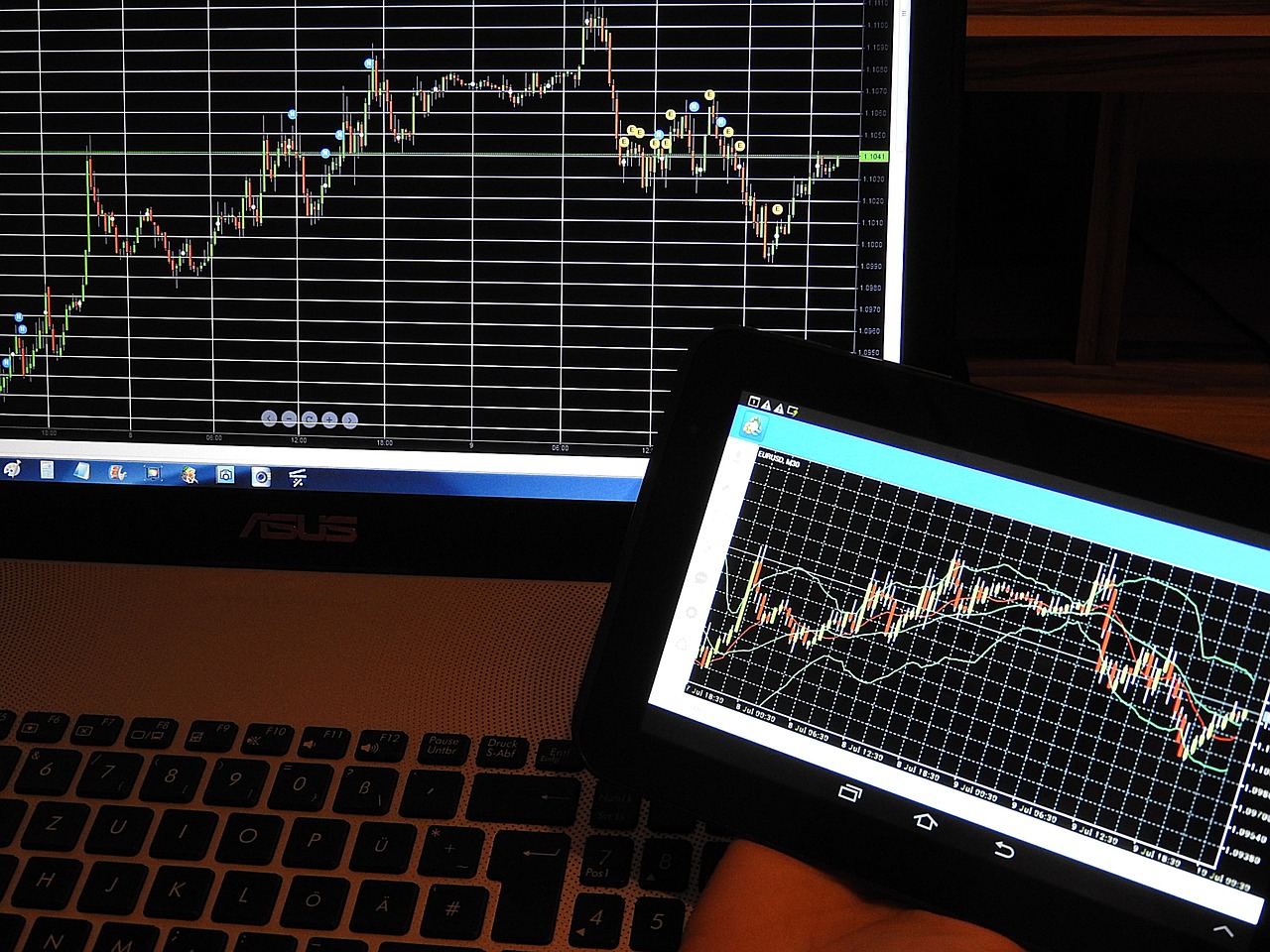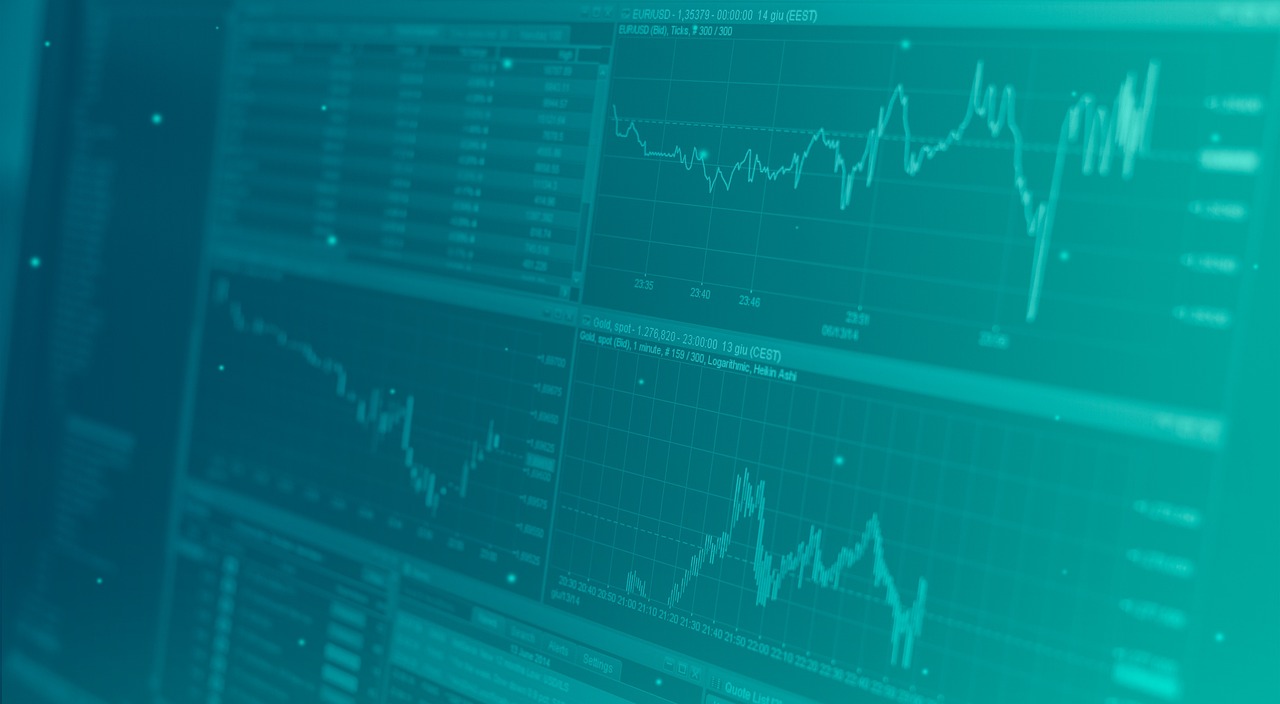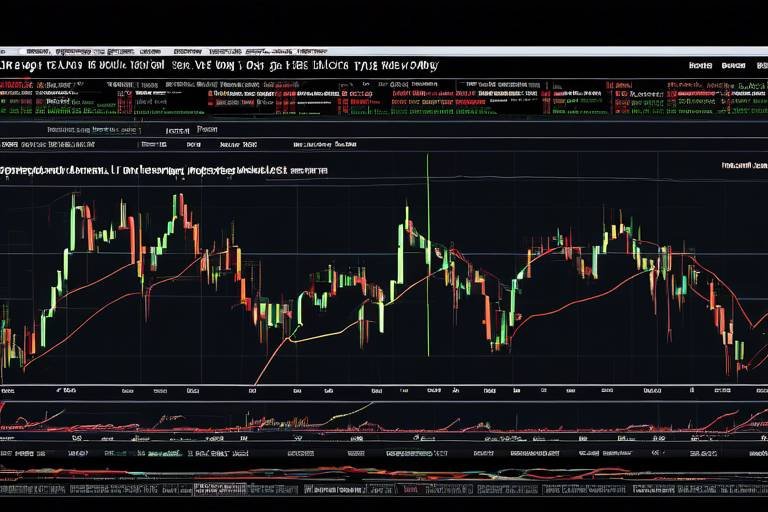How to Analyze Your Trading Performance
Trading is not just about making quick decisions and hoping for the best; it’s a meticulous process that requires constant evaluation and improvement. If you're serious about enhancing your trading game, then understanding how to analyze your trading performance is absolutely crucial. This article will guide you through effective methods to assess your trading activities, helping you pinpoint your strengths, weaknesses, and areas that need improvement. By doing so, you can enhance your overall profitability and make better decisions in future trades. So, let’s dive into the world of trading performance analysis!
Before you can analyze your trading performance, you need to understand the key performance metrics that will provide insights into your effectiveness as a trader. Metrics like win rate, risk-reward ratio, and profit factor are essential for monitoring your trading activities regularly. For instance, your win rate tells you the percentage of trades that are profitable, while the risk-reward ratio helps you assess whether the potential reward justifies the risk taken on each trade. By keeping an eye on these metrics, you can identify patterns in your trading behavior and adjust your strategies accordingly.
A trading journal is more than just a record of your trades; it’s a powerful tool for tracking your performance and analyzing your decisions. Imagine it as your personal trading coach, providing insights and reflections that can lead to significant improvements. To create a structured journal, start by capturing essential details of each trade, such as the date, asset, entry and exit points, and the rationale behind your decisions. This will not only help you keep track of your trades but also allow you to reflect on your thought process during each transaction.
To maximize the effectiveness of your trading journal, consider including specific data points that provide deeper insights into your performance. Here are some vital elements to incorporate:
- Entry and Exit Points: Document where you entered and exited each trade.
- Trade Rationale: Write down your reasons for entering the trade.
- Emotional State: Reflect on your emotions during the trade; were you anxious, confident, or fearful?
By including these elements, you can enhance your ability to analyze your performance and identify areas for improvement.
Regularly reviewing your past trades is essential for uncovering patterns and mistakes that may be holding you back. This retrospective analysis allows you to learn from both your successes and failures. For example, you might discover that you consistently exit trades too early or that certain market conditions lead you to make impulsive decisions. By identifying these patterns, you can adjust your strategies and improve your decision-making processes.
Emotional factors can significantly influence your trading performance. Recognizing these emotional patterns in your trading journal is vital for managing them effectively. For instance, if you notice that you tend to make rash decisions after a series of losses, it may be time to implement strategies to mitigate these emotions. Techniques such as mindfulness and setting strict trading rules can help you maintain a level head when the market gets volatile.
Evaluating the outcomes of your trades is crucial for understanding what works and what doesn’t. By analyzing both winning and losing trades, you can draw actionable insights that inform your future strategies. For instance, if you find that your most profitable trades share common characteristics, you can seek to replicate those conditions in future trades. Conversely, if certain patterns lead to losses, you can adjust your approach to avoid repeating those mistakes.
In today’s digital age, technology can be a game-changer when it comes to performance analysis. Various tools and software are available to help traders track their performance metrics and generate insightful reports. These resources can streamline the analysis process, allowing you to focus on what matters most—improving your trading skills.
Selecting the right tools is essential for effective analysis. Consider using popular trading platforms that offer comprehensive performance analysis features. Look for software that provides detailed reports on your trading metrics, visualizations of your performance over time, and tools for backtesting strategies. The right technology can significantly enhance your ability to analyze and improve your trading performance.
Automation is another smart way to save time and reduce errors in your performance analysis. By using automated tools, you can track your performance metrics and generate insights without the manual effort. This not only frees up your time for trading but also ensures that your analysis is consistent and accurate. Imagine having a personal assistant that crunches the numbers for you—now that’s a trader's dream!
Continuous improvement is the cornerstone of successful trading. It’s not enough to analyze your performance; you must also implement strategies for ongoing learning and adaptation. This means regularly updating your trading strategies based on performance analysis and staying informed about market trends.
Establishing realistic trading goals is crucial for sustained improvement. By setting achievable objectives based on your performance data and personal growth aspirations, you can create a roadmap for your trading journey. Remember, it’s not just about hitting a home run; it’s about making consistent progress over time.
Engaging with mentors and peers can provide valuable insights that enhance your trading strategies. Don’t hesitate to seek feedback on your performance analysis; different perspectives can illuminate blind spots in your approach. A mentor can guide you through your trading challenges, helping you to refine your strategies and achieve your trading goals.
Q: How often should I review my trading performance?
A: It's recommended to review your performance at least weekly to identify patterns and adjust your strategies promptly.
Q: What tools are best for tracking trading performance?
A: Popular tools include trading journals, performance analysis software, and platforms like TradingView or MetaTrader that offer built-in analytics.
Q: How can I manage my emotions while trading?
A: Techniques such as mindfulness, setting strict trading rules, and taking breaks can help you maintain emotional control during trading.

Understanding Key Performance Metrics
When it comes to trading, understanding key performance metrics is like having a compass in the vast ocean of financial markets. These metrics serve as your guiding stars, illuminating the path to better decision-making and enhanced profitability. But what exactly are these metrics, and why should you care about them? Well, let’s dive in!
First off, one of the most critical metrics to keep an eye on is your win rate. This figure represents the percentage of trades that you have won compared to the total number of trades made. Imagine you’re a baseball player; if you hit the ball 70% of the time, you’re likely to be a star. Similarly, a high win rate indicates effective trading strategies. However, it's essential to remember that a high win rate alone doesn't guarantee success if your losses are significantly larger than your wins.
Next, we have the risk-reward ratio. This metric helps you understand how much risk you are taking for the potential reward. For instance, if you’re risking $1 to make $3, your risk-reward ratio is 1:3. A favorable ratio means that even with a lower win rate, you can still come out ahead financially. Think of it as a seesaw; balancing your risks and rewards can lead to a more stable trading experience.
Another crucial metric is the profit factor, which is calculated by dividing your total profits by your total losses. If your profit factor is greater than 1, it means you’re making more money than you’re losing, which is the ultimate goal for any trader. A profit factor of 2 or more is often considered excellent, indicating that for every dollar lost, you’re making two. This metric gives you a clear picture of your trading effectiveness and can be a powerful motivator for improvement.
To truly grasp these metrics, it’s beneficial to monitor them regularly. Consider creating a performance dashboard that displays these key metrics in real-time. This dashboard can serve as a visual representation of your trading journey, helping you identify trends and make informed decisions. You could even use a simple table like the one below to track your performance:
| Metric | Value | Comments |
|---|---|---|
| Win Rate | 70% | Strong performance |
| Risk-Reward Ratio | 1:3 | Good balance |
| Profit Factor | 2.5 | Excellent |
In conclusion, understanding these key performance metrics is essential for any trader who wants to improve their trading game. By focusing on your win rate, risk-reward ratio, and profit factor, you can develop a clearer picture of your trading performance. Remember, the goal isn’t just to win more trades but to create a sustainable and profitable trading strategy that stands the test of time. So, keep your metrics in check, and let them guide you to trading success!
- What is a good win rate for traders? A win rate of 50% is generally considered acceptable, but it varies based on your risk-reward ratio.
- How often should I review my performance metrics? Regular reviews, such as weekly or monthly, can help you stay on track and make necessary adjustments.
- Can I improve my metrics over time? Absolutely! Continuous learning and adapting your strategies based on your performance data is key to improvement.

Setting Up a Trading Journal
Creating a trading journal is like building a personal roadmap for your trading journey. It’s not just about recording your trades; it’s about capturing the essence of your trading decisions, emotions, and outcomes. This structured approach allows you to reflect on your trading behavior and make informed decisions moving forward. Think of it as a diary where each entry helps you understand your past actions and shapes your future strategies.
To set up an effective trading journal, you’ll want to start with a simple template that captures essential details. A well-organized journal should include the following key components:
- Date of the trade: Helps you track your trading history over time.
- Asset traded: Specify the stock, currency, or commodity you traded.
- Entry and exit points: Record the exact prices at which you entered and exited the trade.
- Trade rationale: Write down your reasoning for entering the trade, including any technical or fundamental analysis you performed.
- Emotional state: Reflect on how you felt during the trade. Were you confident, anxious, or fearful?
- Outcome: Document whether the trade was a win or a loss and how much you gained or lost.
- Lessons learned: Conclude each entry with insights or lessons that can help improve your future trades.
By consistently filling out your journal with these details, you create a comprehensive resource that can be invaluable for future analysis. It’s like having a personal coach that helps you identify patterns in your trading behavior. For instance, you might notice that you tend to panic during market dips or that you often exit trades too early. Recognizing these patterns is the first step towards improvement.
Moreover, a trading journal isn't just about numbers; it’s also about reflecting on your emotional journey. Trading can be an emotional rollercoaster, and understanding how your feelings impact your decisions is crucial. When you look back at your entries, you might find that certain emotional triggers lead to poor trading decisions. By being aware of these triggers, you can develop strategies to manage your emotions better and make more rational decisions.
In essence, setting up a trading journal is a powerful tool that can elevate your trading game. It provides clarity, accountability, and a structured way to learn from your experiences. So, if you haven’t started one yet, now is the perfect time to begin your journey of self-discovery and improvement in trading.
Q: How often should I update my trading journal?
A: It's best to update your journal after every trade. This allows you to capture your thoughts and feelings while they are fresh, ensuring more accurate reflections.
Q: Can I use a digital format for my trading journal?
A: Absolutely! Many traders prefer digital formats, as they can easily organize, search, and analyze their data. There are several trading journal software options available that can streamline this process.
Q: What if I forget to record a trade?
A: Don’t stress! Just make a note of it as soon as you remember. The key is consistency, so try to develop a habit of updating your journal regularly.

What to Include in Your Journal
When it comes to maintaining a trading journal, the details you choose to include can make all the difference in your performance analysis. Think of your trading journal as a treasure map; the more precise your notes, the easier it is to find your way to success. To maximize the effectiveness of your journal, you should aim to capture a range of essential data points that reflect not just the mechanics of each trade but also your emotional landscape during the trading process.
First and foremost, you should document your entry and exit points. This means noting the exact price at which you entered a trade and the price at which you exited. Having this data allows you to calculate your gains or losses precisely and gives you a clearer picture of your trading strategy's effectiveness. Remember, it's not just about the numbers; it's about understanding why you made those decisions. Did you enter based on a solid analysis, or were you swayed by market noise?
Another vital component to include is your trade rationale. Why did you decide to take that trade? Was it based on technical indicators, fundamental analysis, or perhaps a gut feeling? Writing down the reasoning behind your trades not only helps you reflect on your decision-making process but also serves as a reference point for future trades. You might find that certain patterns emerge over time, revealing strengths and weaknesses in your trading strategy.
Additionally, capturing your emotional state during each trade can provide invaluable insights. Trading is as much a psychological game as it is a technical one. Were you feeling confident, anxious, or perhaps overly excited? By noting your emotional state, you can identify recurring emotional patterns that may influence your trading decisions. This understanding can help you develop strategies to manage your emotions better, leading to more rational decision-making in future trades.
| Data Point | Description |
|---|---|
| Entry Point | The price at which you entered the trade. |
| Exit Point | The price at which you exited the trade. |
| Trade Rationale | The reasoning behind entering the trade. |
| Emotional State | Your feelings during the trade (e.g., confident, anxious). |
In summary, your trading journal should be a comprehensive record that not only tracks the numbers but also explores the thought processes and emotions behind your trades. By including these elements, you’ll create a rich resource that can guide you toward becoming a more disciplined and successful trader. Remember, each entry in your journal is a stepping stone toward understanding your trading behavior better and, ultimately, improving your performance.
Q: How often should I update my trading journal?
A: It's best to update your trading journal after each trade. This ensures that your thoughts and feelings are fresh and accurately captured.
Q: Can I use digital tools for my trading journal?
A: Absolutely! Many traders prefer digital tools or apps because they can automate data entry and analysis, making it easier to track performance over time.
Q: What if I forget to note my emotional state during a trade?
A: It's okay! Try to reflect on your feelings after the trade and make a note of them. Over time, you'll likely become more aware of your emotions while trading.

Reviewing Past Trades
When it comes to trading, one of the most powerful tools at your disposal is the ability to review past trades. Think of it as your personal trading time machine; it allows you to travel back and analyze your decisions, outcomes, and thought processes. By delving into your past trades, you can uncover invaluable insights that help you refine your strategies and avoid repeating mistakes. So, how do you conduct an effective review?
Firstly, you should set aside dedicated time for this task. Treat it like an important meeting; after all, your trading success depends on it! During your review, focus on both winners and losers. It's easy to get caught up in the thrill of a successful trade, but understanding why a trade went wrong can be just as enlightening. Here are some critical aspects to consider when reviewing your trades:
- Entry and Exit Points: Analyze whether your entry and exit points were well-timed. Did you enter too early or too late? Did you stick to your plan, or were you swayed by emotions?
- Market Conditions: Reflect on the market environment during your trade. Were there any external factors, like news or economic indicators, that may have influenced your trade?
- Trade Rationale: Document the reasoning behind each trade. What was your analysis? Were you following a strategy, or did you act on impulse?
- Emotional State: Consider how you felt during the trade. Were you anxious, confident, or overly excited? Recognizing your emotional state can help you manage it better in future trades.
After gathering this information, it's time to look for patterns. Are there consistent mistakes that you keep making? Perhaps you notice that you tend to exit trades too early out of fear. By identifying these patterns, you can take actionable steps to address them. For example, if you find that you often let emotions dictate your trades, you might want to implement stricter rules or even consider using automated trading tools to minimize emotional influence.
Additionally, consider keeping a trading performance table to summarize your findings. This table can include metrics like win/loss ratio, average profit/loss per trade, and the percentage of trades that met your plan criteria. Here's a simple example:
| Trade Number | Entry Point | Exit Point | Result | Notes |
|---|---|---|---|---|
| 1 | 100 | 110 | Win | Followed plan |
| 2 | 95 | 90 | Loss | Exited too early |
| 3 | 105 | 100 | Loss | Ignored market signals |
Ultimately, the goal of reviewing past trades is to create a feedback loop that informs your future decisions. The more diligent you are in this practice, the better equipped you'll be to navigate the complexities of the trading world. Remember, every trader makes mistakes; it's how you learn from them that sets you apart. So, grab your journal, dig into those past trades, and start paving the way for your trading success!
Q: How often should I review my past trades?
A: It's beneficial to review your trades regularly, ideally after each trading session or weekly, to stay on top of your performance.
Q: What should I do if I notice a recurring mistake?
A: If you identify a pattern of mistakes, take the time to analyze why they happen and implement changes to your strategy to avoid them in the future.
Q: Can technology help me with trade reviews?
A: Absolutely! Many trading platforms offer built-in analysis tools that can help you track performance metrics and visualize your trading history.

Identifying Emotional Patterns
Trading isn't just about numbers and charts; it's a deeply emotional journey that can make or break your success. Have you ever found yourself making impulsive trades after a bad day? Or perhaps you hesitated to enter a trade because you were afraid of losing? These emotional responses can significantly impact your trading performance, and recognizing them is the first step toward improvement. By identifying your emotional patterns, you can take control of your decisions and enhance your overall trading strategy.
To start identifying emotional patterns, it's essential to keep a close eye on your feelings during trades. Consider maintaining a section in your trading journal dedicated to your emotional state. For instance, you might want to ask yourself questions like:
- How did I feel before entering the trade?
- What emotions did I experience during the trade?
- How did my emotions influence my decision-making?
By regularly reflecting on these questions, you can begin to see trends in your emotional responses. You might find that certain market conditions trigger anxiety or excitement, leading to impulsive decisions. For example, if you notice that you tend to overtrade when the market is volatile, this is a clear emotional pattern that needs addressing.
Moreover, you can create a simple table within your journal to track your emotional states alongside your trade outcomes. This could look something like this:
| Trade Date | Emotional State | Trade Outcome | Reflection |
|---|---|---|---|
| 2023-10-01 | Excited | Win | Felt confident; need to replicate this mindset. |
| 2023-10-02 | Anxious | Loss | Rushed into the trade; need to manage anxiety. |
As you populate this table over time, patterns will emerge, revealing how your emotional state correlates with your trading success. Recognizing these patterns is crucial because it allows you to develop strategies to manage your emotions effectively. For instance, if you find that anxiety leads to poor decisions, you might implement breathing exercises or take breaks before making trades.
It's also worth noting that emotional patterns aren't just about negative feelings. Positive emotions can lead to overconfidence, which can be equally detrimental. When you're riding high on a winning streak, it's easy to let excitement cloud your judgment. By being aware of both positive and negative emotional patterns, you can maintain a balanced approach to trading.
In summary, identifying emotional patterns is a vital aspect of analyzing your trading performance. By keeping a detailed record of your feelings, trade outcomes, and reflections, you can gain insights into how emotions influence your trading decisions. This awareness will empower you to make more rational choices, ultimately improving your performance and profitability in the market.
Q: Why is it important to identify emotional patterns in trading?
A: Recognizing emotional patterns helps traders understand how their feelings influence decision-making, allowing for better control and improved performance.
Q: How can I track my emotional state during trades?
A: Keeping a dedicated section in your trading journal to note your feelings before, during, and after trades is an effective way to track your emotional state.
Q: What should I do if I identify negative emotional patterns?
A: Once you've identified negative patterns, consider implementing strategies like mindfulness, setting strict trading rules, or taking breaks to manage your emotions better.
Q: Can positive emotions also affect trading?
A: Yes, positive emotions can lead to overconfidence, which may result in impulsive decisions. It's essential to maintain a balanced emotional state while trading.

Analyzing Trade Outcomes
When it comes to trading, understanding the outcomes of your trades is like peering through a window into your trading soul. It’s not just about whether you made a profit or a loss; it’s about digging deeper to uncover the underlying reasons behind each outcome. By analyzing both winning and losing trades, you can extract valuable insights that will inform your future decisions.
Let’s break this down. First, consider the winning trades. What strategies did you employ that led to success? Was it a specific market condition or a particular setup that worked in your favor? Reflecting on these factors can help you replicate your successes. For instance, you might find that your winning trades often occurred during specific times of the day or under certain market conditions. Keeping track of these patterns can give you a competitive edge.
On the flip side, losing trades can be even more enlightening. They often reveal the mistakes we make or the assumptions we hold that may not be accurate. By analyzing your losses, you can identify common threads. Did you enter trades too quickly? Did you ignore your stop-loss orders? Understanding these mistakes is crucial. To facilitate this analysis, consider creating a simple table to track your trades:
| Trade Number | Outcome | Entry Point | Exit Point | Notes |
|---|---|---|---|---|
| 1 | Win | 1.1200 | 1.1300 | Used a strong support level |
| 2 | Loss | 1.1250 | 1.1200 | Ignored market news |
| 3 | Win | 1.1150 | 1.1250 | Followed trend lines |
This table not only helps you visualize your performance but also serves as a reference point for future trades. As you fill it out over time, patterns will emerge, and you’ll be able to see which strategies yield the best outcomes consistently.
Moreover, don’t overlook the importance of your emotional state during each trade. Emotions can cloud judgment, leading to impulsive decisions. Did you feel overly confident after a string of wins? Or perhaps anxious after a few losses? Documenting your emotions alongside your trade outcomes can help you recognize emotional triggers that impact your trading decisions.
In summary, analyzing trade outcomes is a multifaceted approach that requires attention to detail and a willingness to learn from both successes and failures. By carefully dissecting your trades, you can hone your strategies, mitigate emotional influences, and ultimately enhance your trading performance.
- Why is analyzing trade outcomes important? Analyzing trade outcomes helps traders understand what strategies work and what doesn’t, allowing them to make informed decisions in the future.
- How can I effectively track my trade outcomes? You can use a trading journal or a simple table to log your trades, including entry and exit points, outcomes, and notes on your emotional state.
- What should I focus on when analyzing losing trades? Focus on identifying patterns in your losses, such as common mistakes or overlooked factors, which can provide insights for improvement.

Utilizing Technology for Performance Analysis
In today’s fast-paced trading environment, technology plays a pivotal role in enhancing performance analysis. With the right tools at your disposal, you can gain insights that would otherwise be obscured by manual tracking. Imagine trying to find a needle in a haystack—without technology, that’s exactly how it feels when analyzing your trading performance. But with the right software, that needle becomes much easier to find!
There are numerous tools and platforms available that can help you track your performance metrics, generate reports, and even provide predictive analytics based on historical data. These tools not only save you time but also minimize the chances of human error, allowing you to focus more on making informed decisions rather than getting bogged down in the numbers.
Some of the key features to look for in trading software include:
- Automated Performance Tracking: This feature allows you to automatically log your trades and performance metrics without manual input, ensuring accuracy and saving time.
- Comprehensive Reporting: Good software should provide detailed reports that break down your performance by various metrics, such as win rate, average profit per trade, and more.
- Customizable Dashboards: A personalized dashboard can help you visualize your performance metrics in a way that makes sense to you, allowing for quicker insights.
When selecting the right tools, consider your individual trading style and needs. For instance, day traders may require real-time data feeds and rapid analysis, while swing traders might benefit from tools that focus on historical performance over a longer period. It’s essential to choose a platform that aligns with your trading goals and can adapt as those goals evolve.
Moreover, many of these tools offer integration with other platforms, allowing you to consolidate your trading data in one place. This can be incredibly beneficial for performance analysis, as it provides a holistic view of your trading activities. Think of it as having a control center where you can monitor everything that’s happening in your trading world.
For those who are looking to automate their analysis, several software solutions offer features that can track performance metrics without any manual effort. These automated systems can send you alerts when your performance dips below a certain threshold or when you hit a new milestone, making it easier to stay on top of your trading game.
Ultimately, leveraging technology for performance analysis is about making informed decisions. The insights gained from data analysis can help you identify trends, understand your strengths and weaknesses, and refine your trading strategies. By embracing these tools, you can transform your trading approach from a reactive to a proactive one, positioning yourself for greater success in the market.
Q: What are the benefits of using trading software for performance analysis?
A: Trading software provides automated tracking, comprehensive reporting, and customizable dashboards, which help you analyze your performance more accurately and efficiently.
Q: Can I integrate trading software with my existing platforms?
A: Yes, many trading software options offer integration capabilities, allowing you to consolidate data from various platforms for a more comprehensive analysis.
Q: How can automation improve my trading performance?
A: Automation reduces manual errors and saves time, enabling you to focus on strategy and decision-making rather than data entry and analysis.

Choosing the Right Tools
When it comes to analyzing your trading performance, selecting the right tools can make all the difference. In the vast ocean of trading platforms and software available today, finding the ones that suit your needs is crucial. Think of it like choosing the right fishing gear; the right tools can help you catch the big ones while avoiding the ones that get away. But what should you look for in these tools?
First and foremost, you want tools that provide comprehensive performance metrics. This means the software should track essential data points such as your win rate, average profit per trade, and the risk-reward ratio. Imagine trying to navigate a ship without a compass; without these metrics, you could easily drift off course. Some popular tools that traders often recommend include:
- MetaTrader 4/5: Known for its user-friendly interface and extensive analytical features.
- TradingView: Excellent for charting and community insights.
- TradeStation: Offers powerful analytics and backtesting capabilities.
Another vital feature to consider is automation capabilities. In today's fast-paced trading environment, the ability to automate certain processes can save you time and reduce human error. For instance, automated reporting tools can generate performance reports without you having to sift through data manually. This is akin to having a personal assistant who organizes your files and reminds you of important deadlines. Tools like TradeLog and Edgewonk can facilitate this automation, allowing you to focus on making informed trading decisions.
Additionally, look for tools that offer customization options. Every trader has unique strategies and preferences; therefore, having the ability to tailor your tools to fit your style can enhance your performance analysis significantly. Think of it as customizing your car to suit your driving style—when everything feels comfortable and familiar, you're more likely to drive effectively.
Lastly, consider the community and support that comes with the tools. A vibrant community can provide valuable insights and shared experiences, which are incredibly beneficial for traders looking to improve. Platforms like TradingView not only provide analytical tools but also foster a community where traders exchange ideas and strategies. This collaborative spirit can be likened to a group of fishermen sharing their best spots and techniques—everyone benefits from the shared knowledge.
In summary, choosing the right tools for performance analysis involves evaluating their features, automation capabilities, customization options, and community support. By investing time in selecting the right tools, you're setting yourself up for a smoother and more productive trading journey. So, gear up, make informed choices, and watch your trading performance soar!
Q: How often should I analyze my trading performance?
A: It's advisable to analyze your trading performance regularly, such as weekly or monthly, to identify trends and make necessary adjustments.
Q: Can I use multiple tools for performance analysis?
A: Absolutely! Many traders find that using a combination of tools can provide a more comprehensive view of their performance.
Q: What if I don't understand the metrics?
A: Don't hesitate to seek out educational resources or communities where you can learn about the metrics and how to interpret them effectively.

Automating Your Analysis
In today's fast-paced trading environment, automation can be a game-changer. Imagine having a personal assistant that tirelessly tracks your performance metrics, analyzes your trades, and generates insightful reports—all while you focus on making strategic decisions. Sounds appealing, right? By automating your analysis, you can save precious time and minimize the risk of human error, allowing you to enhance your trading strategies effectively.
There are various tools and software available that can help you achieve this seamless automation. For instance, platforms like MetaTrader and TradeStation offer built-in features for tracking your trades and performance metrics automatically. These tools can analyze your trading patterns, providing you with a clearer picture of what works and what doesn’t. Moreover, they can generate comprehensive reports that highlight your strengths and weaknesses, making it easier to identify areas for improvement.
When setting up your automated analysis system, consider the following key features:
- Real-time performance tracking: Ensure that the tool you choose can provide live updates on your trades and performance metrics.
- Customizable dashboards: Look for software that allows you to personalize your dashboard to focus on the metrics that matter most to you.
- Automated reporting: Choose a platform that can generate daily, weekly, or monthly reports automatically, saving you the hassle of manual data compilation.
Moreover, automation can help you identify trends and patterns that might be difficult to see with the naked eye. For example, you might notice that your trading performance dips during specific market conditions or times of the day. With automated analysis, you can easily spot these trends and adjust your strategies accordingly. In essence, it’s like having a magnifying glass that brings your trading performance into sharp focus.
But remember, while automation can significantly enhance your analysis process, it’s essential to remain actively engaged in your trading strategy. Use the insights generated by automated tools to inform your decisions, but don’t rely solely on them. Think of automation as your co-pilot—helping you navigate the complexities of trading while you remain in control of the flight path.
In conclusion, automating your analysis not only saves time and reduces errors but also empowers you to make informed decisions based on data-driven insights. By leveraging technology in your trading journey, you can enhance your performance and ultimately achieve greater success in the markets.
Q: What are the main benefits of automating my trading analysis?
A: Automating your trading analysis can save time, reduce human error, and provide you with real-time insights into your performance metrics. This allows you to focus on strategy and decision-making.
Q: Are there specific tools you recommend for automating trading analysis?
A: Yes, popular tools include MetaTrader, TradeStation, and TradingView. These platforms offer various features for performance tracking and reporting.
Q: Can I still manually analyze trades if I automate my analysis?
A: Absolutely! Automation is meant to enhance your analysis, not replace it. You should still review your trades and insights regularly to make informed decisions.
Q: How often should I review my automated reports?
A: It’s advisable to review your automated reports at least weekly or monthly, depending on your trading frequency. Regular reviews help you stay on track and make necessary adjustments.

Continuous Improvement Strategies
In the world of trading, continuous improvement isn’t just a buzzword; it’s a necessary mindset. Think of it like tuning a musical instrument. You wouldn’t just set it and forget it, right? You’d regularly check the strings, adjust the pitch, and ensure it sounds just right. Similarly, your trading strategies require constant refinement to adapt to the ever-changing market dynamics. So, how do you embark on this journey of improvement?
First and foremost, it’s essential to set realistic goals. This involves looking back at your trading performance and identifying areas where you can realistically improve. Are you consistently missing your profit targets? Or perhaps your win rate is lower than you expected? By establishing clear, achievable objectives, you're not just setting yourself up for success; you're creating a roadmap for your trading journey. For instance, if your current win rate is 40%, aim to increase it to 45% over the next quarter. This small yet significant step can lead to greater confidence and profitability.
Next, consider seeking feedback and mentorship. Engaging with experienced traders can provide insights that you might overlook. It’s like having a coach in your corner, offering advice and strategies based on their own experiences. You might ask, “How do I approach a losing streak?” or “What strategies work best in volatile markets?” These conversations can open doors to new perspectives and techniques. You could even join trading forums or local meetups to share experiences and learn from others.
Another crucial aspect of continuous improvement is self-reflection. After each trading session, take some time to reflect on your decisions. What went well? What didn’t? How did your emotional state influence your trades? This kind of introspection can help you identify patterns in your behavior and decision-making processes. You might even consider keeping a dedicated section in your trading journal for reflections. This way, you can track your progress over time and notice how your mindset evolves.
Finally, embrace the power of technology. There are numerous tools available that can help you analyze your trading performance more effectively. From detailed performance reports to automated trade tracking, leveraging technology can save you time and provide insights that manual analysis might miss. For example, platforms like TradingView or MetaTrader offer advanced analytics features that can help you visualize your performance metrics and make informed decisions.
In summary, continuous improvement in trading is not just about making more money; it’s about becoming a better trader. By setting realistic goals, seeking feedback, engaging in self-reflection, and utilizing technology, you can create a robust framework for ongoing growth in your trading journey. Remember, every great trader started somewhere, and the key to success lies in the willingness to learn and adapt.
- What are realistic trading goals? Realistic trading goals are achievable objectives based on your current performance metrics and market conditions. For example, increasing your win rate by a small percentage over a set period.
- How can I find a mentor? You can find a mentor by networking in trading forums, attending seminars, or joining trading groups where experienced traders share their knowledge.
- What tools are best for performance analysis? Tools like TradingView, MetaTrader, and various trading journals can help you analyze your performance effectively.

Setting Realistic Goals
Setting realistic goals is a fundamental aspect of successful trading that often gets overlooked. Many traders dive into the market with grand ambitions, dreaming of turning a small investment into a fortune overnight. However, such lofty aspirations can lead to disappointment and frustration. Instead, it’s crucial to establish achievable and measurable objectives that align with your trading strategy and personal circumstances.
When you set realistic goals, you create a roadmap that guides your trading decisions and keeps you focused. Think of it like setting up a GPS for a long road trip; without a clear destination, you might end up lost or, worse, driving in circles. The key is to break down your long-term aspirations into smaller, manageable milestones. This approach not only makes your goals seem less daunting but also provides a sense of accomplishment as you achieve each step along the way.
Consider the following elements when setting your trading goals:
- Specificity: Vague goals like "I want to be a successful trader" don’t provide clear direction. Instead, aim for specific targets, such as "I want to achieve a 10% return on my investment within the next six months."
- Measurability: Ensure that your goals can be measured. This means having clear metrics to track your progress. For instance, you could track your monthly profit and loss statements to see if you’re on track.
- Achievability: While it's important to challenge yourself, setting goals that are too ambitious can lead to burnout. Assess your current skills, market conditions, and available time to ensure your goals are realistic.
- Relevance: Your goals should be relevant to your overall trading strategy. If your focus is on day trading, setting a goal related to long-term investments wouldn’t make sense.
- Time-bound: Every goal should have a deadline. This creates a sense of urgency and helps you stay accountable. For example, you might set a goal to increase your trading account by 5% each month for the next year.
Additionally, consider keeping a goal tracker where you can document your objectives and the progress you make toward them. This could be a simple table where you list your goals, the target dates, and your current status. Here's a basic example:
| Goal | Target Date | Status |
|---|---|---|
| Achieve 10% ROI | June 30, 2024 | In Progress |
| Complete 5 trading courses | December 31, 2024 | Not Started |
| Reduce losing trades by 20% | March 31, 2024 | In Progress |
By setting realistic goals, you not only enhance your chances of success but also cultivate a positive trading mindset. Remember, the journey of trading is as important as the destination. Celebrate your small victories, learn from your setbacks, and keep refining your goals as you grow. This way, you’ll not only become a better trader but also enjoy the process along the way!
Q: How often should I review my trading goals?
A: It's advisable to review your trading goals regularly, such as monthly or quarterly, to assess your progress and make necessary adjustments.
Q: What if I don’t achieve my trading goals?
A: Don't be discouraged! Analyze what went wrong, learn from the experience, and adjust your goals or strategies accordingly.
Q: Can I change my goals mid-way?
A: Absolutely! As you gain more experience and knowledge, it’s natural to adjust your goals to better reflect your evolving trading journey.

Seeking Feedback and Mentorship
In the world of trading, one of the most powerful assets you can have is a solid support system. Seeking feedback and mentorship can be the game-changer that propels your trading journey to new heights. Imagine trying to navigate a vast ocean without a compass; that's what trading can feel like without guidance. Mentors and peers can provide that essential direction, helping you to avoid common pitfalls and capitalize on opportunities.
Finding a mentor who resonates with your trading style and philosophy is crucial. A good mentor is not just someone who has been in the game longer; they should be someone who can share their experiences, offer constructive criticism, and challenge your thinking. They can help you see things from a different perspective, which is invaluable when you're entrenched in your own trading habits. Think of them as your trading coach—someone who can analyze your performance and provide insights that you might overlook.
Feedback, on the other hand, is a tool that can help you refine your strategies. It can come from various sources, including trading forums, social media groups, or even trading apps that allow for community interaction. Engaging with other traders can expose you to different strategies and viewpoints, enriching your understanding of the market. When you receive feedback, it’s essential to approach it with an open mind. Consider the following:
- Are the suggestions practical and applicable to your trading style?
- Do they align with your trading goals and risk tolerance?
- How can you implement this feedback in your future trades?
Moreover, sharing your own experiences and insights can also be beneficial. By participating in discussions, you not only help others but also reinforce your own learning. This reciprocal relationship can foster a community of growth and improvement, where everyone benefits from shared knowledge.
Lastly, don’t underestimate the power of networking. Attend trading seminars, webinars, and workshops where you can meet experienced traders and mentors. Building these connections can open doors to invaluable resources and insights that you might not find online. Remember, trading is not just about numbers; it’s about relationships and learning from one another.
In summary, seeking feedback and mentorship is not just a strategy; it’s a mindset. Embrace the journey of learning from others, and you’ll find that your trading skills will improve exponentially. The more you engage with the trading community, the more equipped you’ll be to tackle the challenges that come your way.
- How do I find a mentor? Look for experienced traders in forums, social media, or local trading groups. Attend trading seminars where you can network.
- What should I look for in feedback? Ensure feedback is constructive, relevant to your trading style, and actionable.
- Can I learn from my peers? Absolutely! Engaging with peers can provide fresh perspectives and new strategies.
- How often should I seek feedback? Regularly! After significant trades or at the end of a trading week, seek insights to continuously improve.
Frequently Asked Questions
- What are key performance metrics in trading?
Key performance metrics in trading are essential indicators that help you evaluate your trading effectiveness. These include the win rate, which measures the percentage of profitable trades, the risk-reward ratio, which assesses the potential profit versus loss on trades, and the profit factor, indicating how much profit is made for every dollar lost. Monitoring these metrics regularly can lead to better trading decisions.
- Why is a trading journal important?
A trading journal is vital because it allows you to track your trades systematically and analyze your performance over time. By documenting each trade's details, including entry and exit points, rationale, and emotional state, you can identify patterns and areas needing improvement. This structured approach helps you learn from both successes and mistakes, ultimately enhancing your trading skills.
- How can I identify emotional patterns in my trading?
Identifying emotional patterns involves reflecting on your feelings during trades and documenting them in your trading journal. Look for recurring emotions such as fear, greed, or frustration, and note how they influenced your decision-making. By recognizing these patterns, you can develop strategies to manage your emotions better, leading to more disciplined trading.
- What tools can help with performance analysis?
There are numerous tools available for performance analysis, such as trading software and platforms that offer comprehensive tracking features. Some popular options include MetaTrader, TradingView, and specialized performance analysis tools like Edgewonk or Trademetria. These tools can automate the tracking of key metrics and generate detailed reports, making it easier for you to analyze your performance.
- How can I set realistic trading goals?
Setting realistic trading goals starts with analyzing your performance data and understanding your current capabilities. Consider your past results and identify achievable objectives that align with your personal growth aspirations. For instance, instead of aiming for a specific profit percentage, focus on improving your win rate or refining your trading strategy over time.
- Why should I seek feedback and mentorship?
Seeking feedback and mentorship is crucial for gaining new perspectives on your trading performance. Engaging with experienced traders or mentors can provide valuable insights and constructive criticism that you might not see on your own. This collaborative approach can help you refine your strategies, avoid common pitfalls, and ultimately improve your trading outcomes.



















